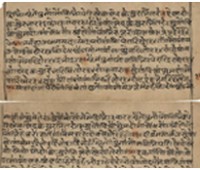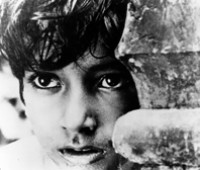Culture
Literature
The earliest works of Indian literature were orally transmitted. The Rig Veda, a collection of sacred hymns (1500–1200 BCE), and epics Ramayana and Mahabharata composed towards the end of the first millennium BCE, form a part of India’s impressive repository of literary works.Examples of Classical Sanskrit literature include Shakuntala and Meghaduuta, two plays written by Kalidas,indisputable India’s greatest playwright in Sanskrit;Mricchakatika by Shudraka;SvapnaVasavadattam by Bhasa, and Ratnavali by Sri Harsha. Later poetic works include GeetaGovinda by Jayadeva, as well asChanakya'sArthashastra and Vatsyayana'sKamasutra.
In the medieval period, Kannada and Telugu literature gained ascendency in the 9th and 11th centuries, followed by works in Marathi, Bengali, and various dialects of Hindi, Persian and Urdu. Bengali poet Rabindranath Tagore became India's first Nobel Laureateliterature in early 20th century.

Music
Said to be one of the oldest unbroken musical traditions in the world, Indian classical music has its originsin the Vedas (ancient scriptures of the Hindus). Over the centuries, Indian classical music has also evolved through interaction between different races and cultures.
The foundation of Indian music is ‘sangeet,’ a combination of three artforms: vocal music, instrumental music and dance. Although these three artforms were originally derived from stagecraft, today they represent different, highly complex individual artforms.
The system of Indian music is based onraag and taal with the former being the melodic form and the latter the rhythmic.
Raagcan be roughly equated with the Western term mode or scale. There is a system of seven notes which are arranged similar to Western scales. The taals are complex and revolve around repeating patterns of beats.
The different interpretations of the raag and the taalhas led to the distinction of two major traditions of classical music: Hindustani sangeetof the north and Carnatic sangeet of the south.
Instruments typically used in Hindustani music include the sitar, sarod, surbahar, tanpura, bansuri, shehnai, sarangi, santoor, pakhavaj and tabla. Instruments typically used in Carnatic music include venu, gottuvadyam, harmonium, veena, mridangam, kanjira, ghatam and violin.

Cinema
India is the world's largest producer of films, with as many as 1,000 films in various languages of India being produced annually. India’s first full-length motion picture,Raja Harishchandra (1913), a silent film in Marathi,was produced by DadasahebPhalke. ArdeshirIrani released AlamAra, the first Indian talking film, on 14 March 1931 and H.M. Reddy, produced and directed BhaktaPrahlada (Telugu), released on 15 September 15, 1931 and Kalidas (Tamil) released on 31 October 31, 1931.
The 'Golden Age' of Indian cinema -- the late 1940s to the 1960s – saw the production of some of the most critically acclaimed Indian films of all time, such as Guru Dutt’s films Pyaasa (1957) and KaagazKePhool (1959) and Raj Kapoor films Awaara (1951) and Shree 420 (1955). These films expressed social themes mainly dealing with working-class urban life in India post independence.
Simultaneously, the Parallel Cinema movement, mainly led by Bengali cinema, emerged. Early examples of films in this movement include ChetanAnand'sNeecha Nagar (1946),[RitwikGhatak'sNagarik (1952), and Bimal Roy's Do BeeghaZameen (1953), laying the foundations for Indian neorealism and the "Indian New Wave". Satyajit Ray’s The Apu Trilogy (1955–1959) won major prizes at all the major international film festivals and led to the 'Parallel Cinema' movement being firmly established in Indian cinema. Ever since ChetanAnand's social realist film Neecha Nagar won the Grand Prize at the first Cannes Film Festival, Indian films frequently competed for the Palme d'Or at the Cannes Film Festival for nearly every year in the 1950s and early 1960s, with a number of them winning major prizes at the festival. Satyajit Ray also won the Golden Lion at the Venice Film Festival for Aparajito (1956), the second part of The Apu Trilogy, and the Golden Bear and two Silver Bears for Best Director at the Berlin International Film Festival. A number of Indian films from different regions, from this era are often included among the greatest films of all time in various critics' and directors' polls
